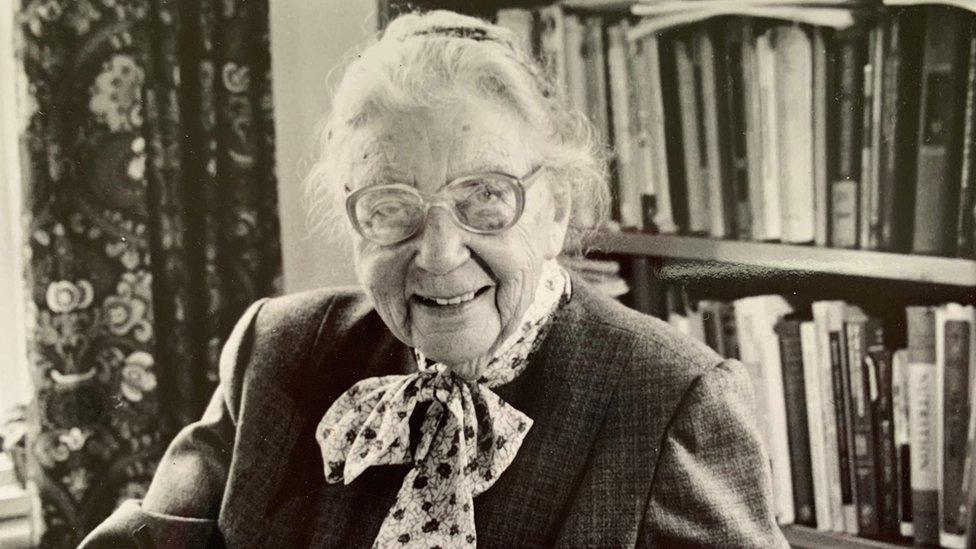Man's project to get veterans to sign his gun

Jay Hawkins (left) reckons he has travelled about 20,000 miles (32,186 km) since he began gathering the stories and signatures of World War Two veterans four years ago
- Published
A woman who worked for "Churchill's secret army" and a Normandy veteran were among the latest World War Two forces personnel to sign a history enthusiast's Lee-Enfield rifle.
Jay Hawkins, 27, from St Ives, Cambridgeshire, was inspired to travel the country to hear the wartime experiences of RAF, Army and Royal Navy personnel after he acquired the 1939 weapon.
Since starting the project four years ago, the painter and decorator has gathered about 130 stories and signatures.
"My feeling on meeting each veteran is still the same as when I first started - it's a feeling of honour to be sitting in the same room and shaking their hands," he said.

He recently met Joyce Wilding, who was a Special Operations Executive (SOE) veteran
He added: "It's also a bit of a race against time as a 'young' World War Two veteran is now 97 or 98-years-old, but it's never been a numbers game.
"If I only ever met 10 of them, it's 10 I got to shake hands with and it's an honour."
Recently he met Joyce Wilding, who was the first Special Operations Executive (SOE) veteran to have signed the rifle.
SOE has been nicknamed Winston Churchill's secret army, after he ordered the volunteer force to "set Europe ablaze", external.
Its agents were mainly tasked with sabotage and subversion having been parachuted into occupied Europe.
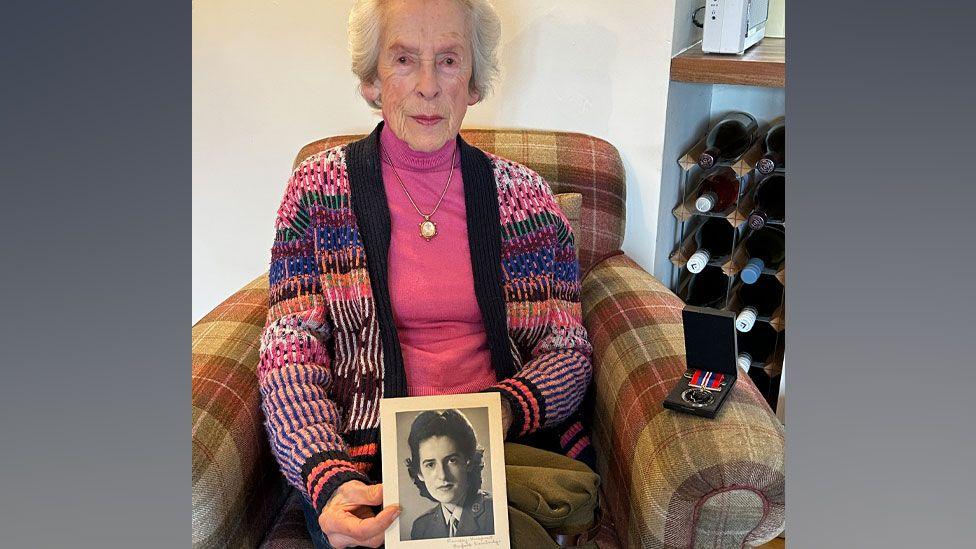
She worked in a transmitter hut in Oxfordshire, receiving Morse code messages from agents in the field
Ms Wilding, 100, from Sussex, started as an ambulance drive in the First Aid Nursing Yeomanry (FANY) before joining the Auxiliary Transport Service (ATS), the women's branch of the Army.
Mr Hawkins said: "She was later attached to the SOE in the transmitter huts in Oxfordshire, where she received messages in Morse code from secret agents overseas - the life expectancy of agents was about six weeks.
"She never knew the identities of the agents she was speaking to, but while transmitting the messages she thinks she may have spoken to Violette Szabo."
Violette Szabo was captured in 1944 during her second mission in France, brutally tortured and executed in early 1945, external.
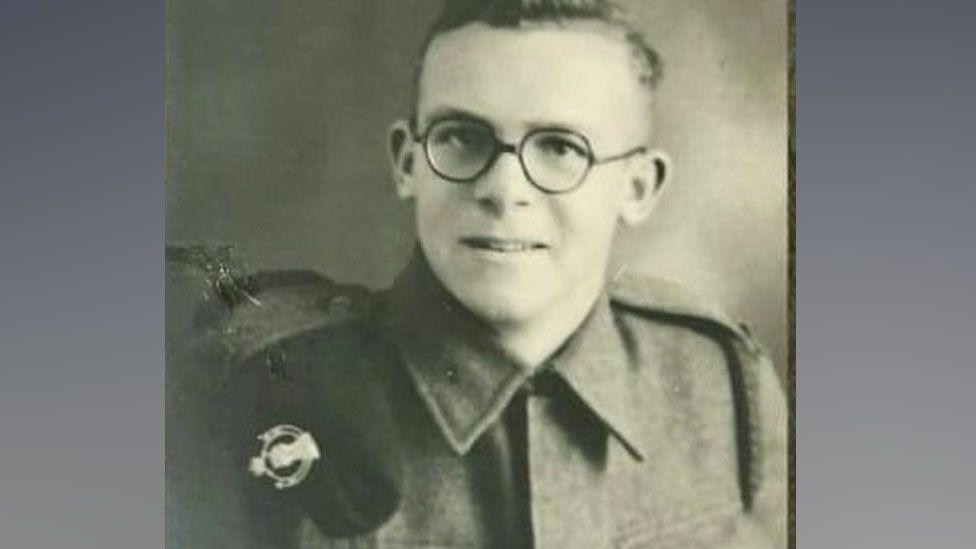
Roy Hayward went from basic training at Bovington Camp in Dorset to landing in Normandy
Roy Hayward lost both his legs in Normandy, a couple of weeks after he arrived in France on the evening of D-Day, 6 June 1944.
The 18-year-old was a Sherwood Yeomanry Rangers gunner and loader when his Sherman tank came under attack from a German Tiger tank on 25 June.
"He told me, all of a sudden an explosive round penetrated the tank, setting it alight," said Mr Hawkins.
"When Roy got out he looked down to find both his legs below the knee had gone."
After treatment in a field hospital, he was shipped back to Portsmouth and when his dressings were removed, "his legs were covered in maggots to his horror and the nurse's delight as they had cleaned up his wound".
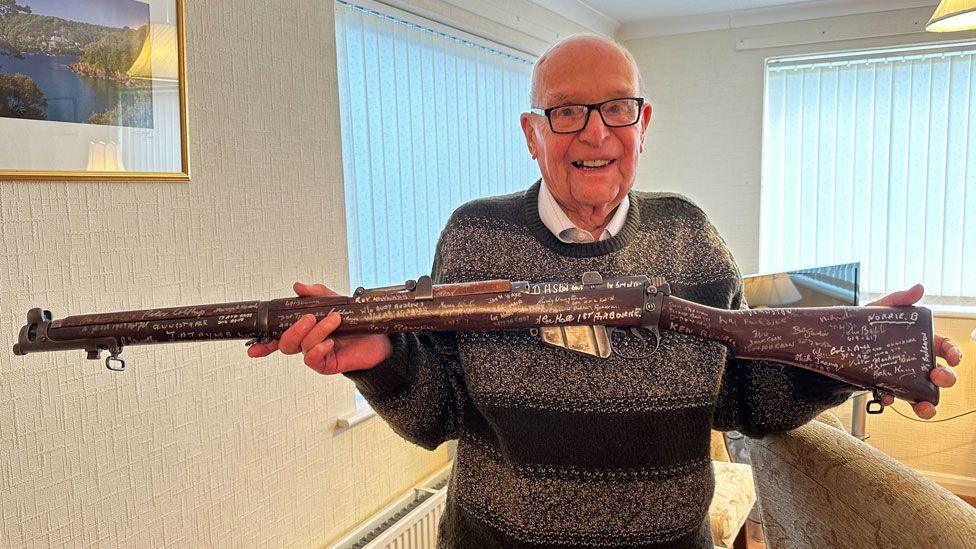
Like most of the veterans, Roy Hayward was surprised by the weight of the weapon
Mr Hayward, 99, who lives in the Isle of Wight, was the first double-amputee to sign the rifle.
"He doesn't see himself as someone who lost this legs but instead as someone who came home and lived a long and full life, unlike so many comrades," said Mr Hawkins.
The history buff is in talks with a museum about eventually displaying the rifle, alongside each veterans' story.
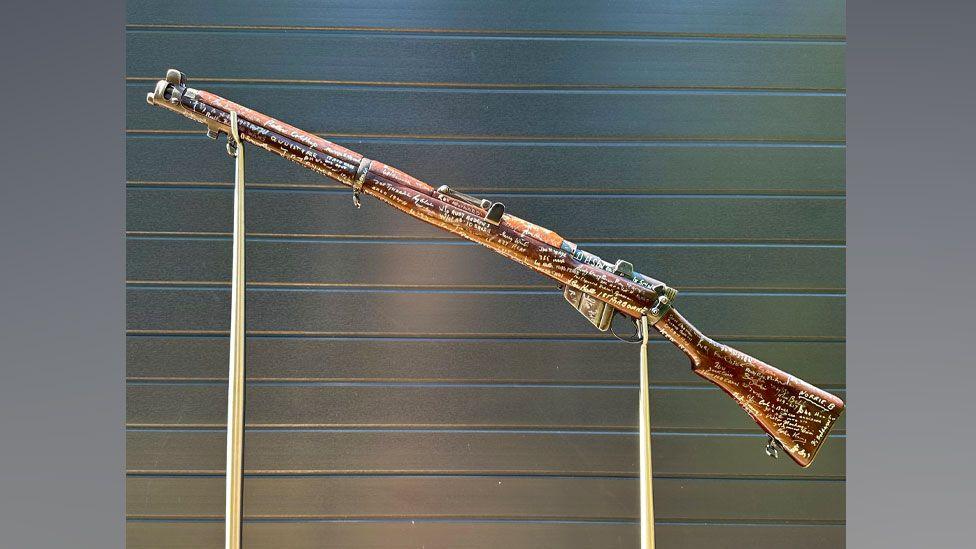
Mr Hawkins is continuing to collect signatures and is in talks with seven or eight veterans and their families about interviewing them next
Get in touch
Do you have a story suggestion for Cambridgeshire?
Follow Cambridgeshire news on BBC Sounds, Facebook, external, Instagram, external and X, external.
Related topics
- Published2 June 2024
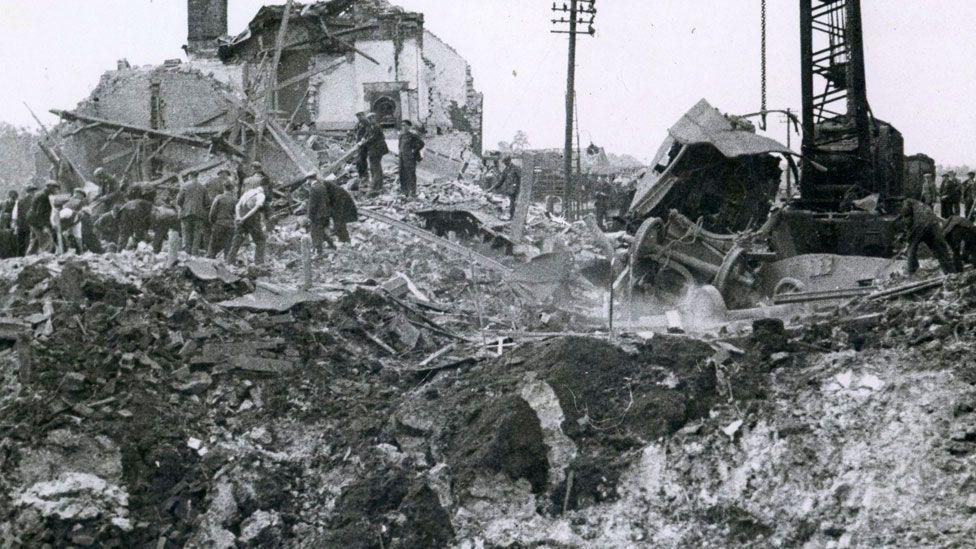
- Published6 November 2023
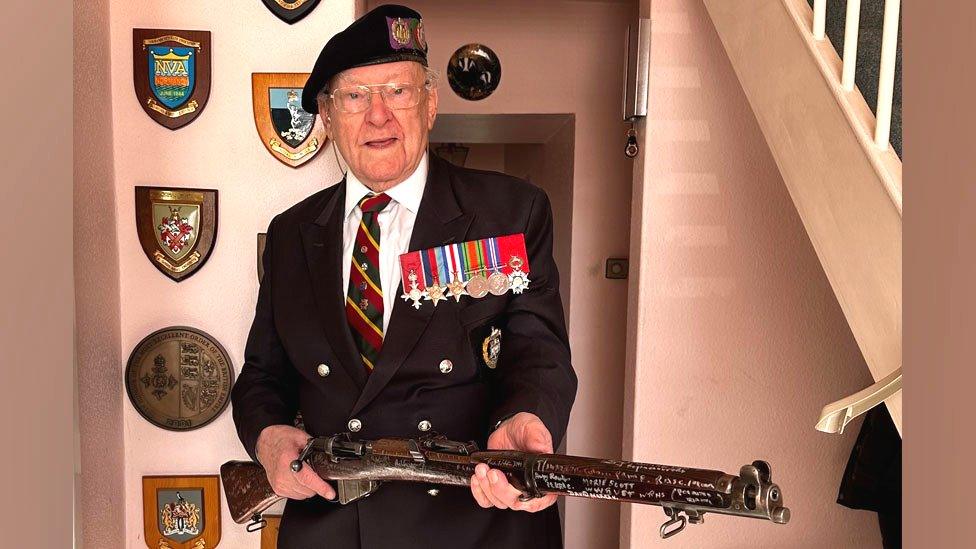
- Published27 June 2021
